Special Report
This Is How Long America’s Most Popular Dog Breeds Normally Live

Published:

Dogs are incredibly popular pets in the U.S. About 85 million American households own a pet, and more than 63 million of them have a dog. Many factors contribute to choosing the right breed for the home, including owners’ allergies as well as the dog’s exercise needs and life expectancy.
Saying goodbye to a dog is perhaps one of the saddest experiences about having a furry friend. Most dogs live around 10-12 years, with small breeds generally living longer than large breeds, and some reaching up to 16 years.
24/7 Tempo reviewed data provided by the American Kennel Club, the country’s purebred dog registry, to list the estimated life expectancy of the 25 most popular dogs in the U.S.. The AKC currently recognizes 197 dog breeds.
The life span of 2020’s 25 most popular dogs in the U.S. varies from as few as seven to as many as 18 years, though the life expectancy of most breeds on this list is in the 10-15 range.
People typically get dogs when they’re puppies because they are still a size that can be easily managed and are perhaps the most irresistible as pups. But some appear to stay puppies longer than others due to their small size, even throughout their life, with similar temperament and playfulness. These are 20 dogs that stay puppies the longest.
Click here to see how long America’s most popular dog breeds normally live
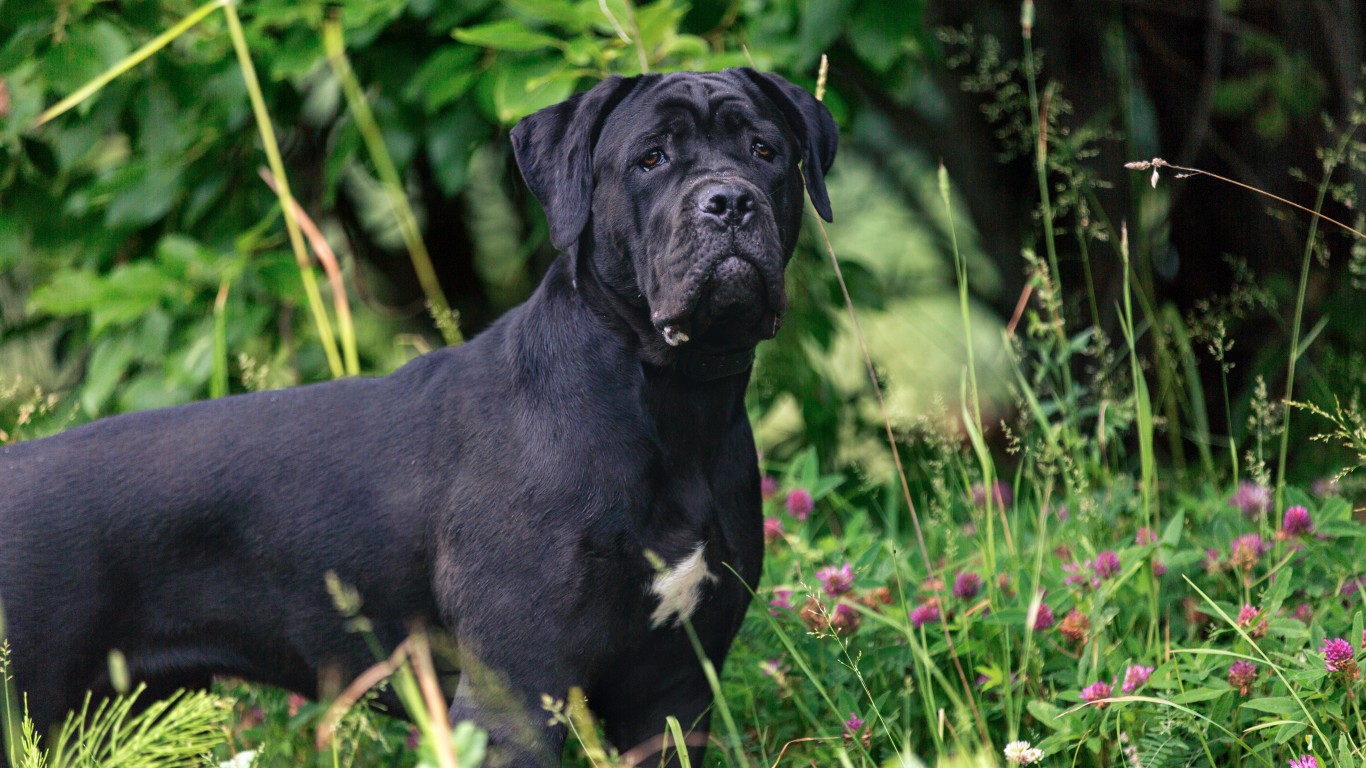
25. Cane Corso
> Life expectancy: 9-12 years
> Average height: 25-27.5 inches (male), 23.5-26 inches (female)
> Average weight: Proportionate to height
> Group: Working
Originating in Italy and bred as guard dogs, the AKC describes cane corsos as “peerless protectors.” Notwithstanding their intimidating appearance — they are among the biggest dogs in the world (100 pounds for males) — cane corso are also intelligent, loyal, and docile in the company of their owners.
[in-text-ad]
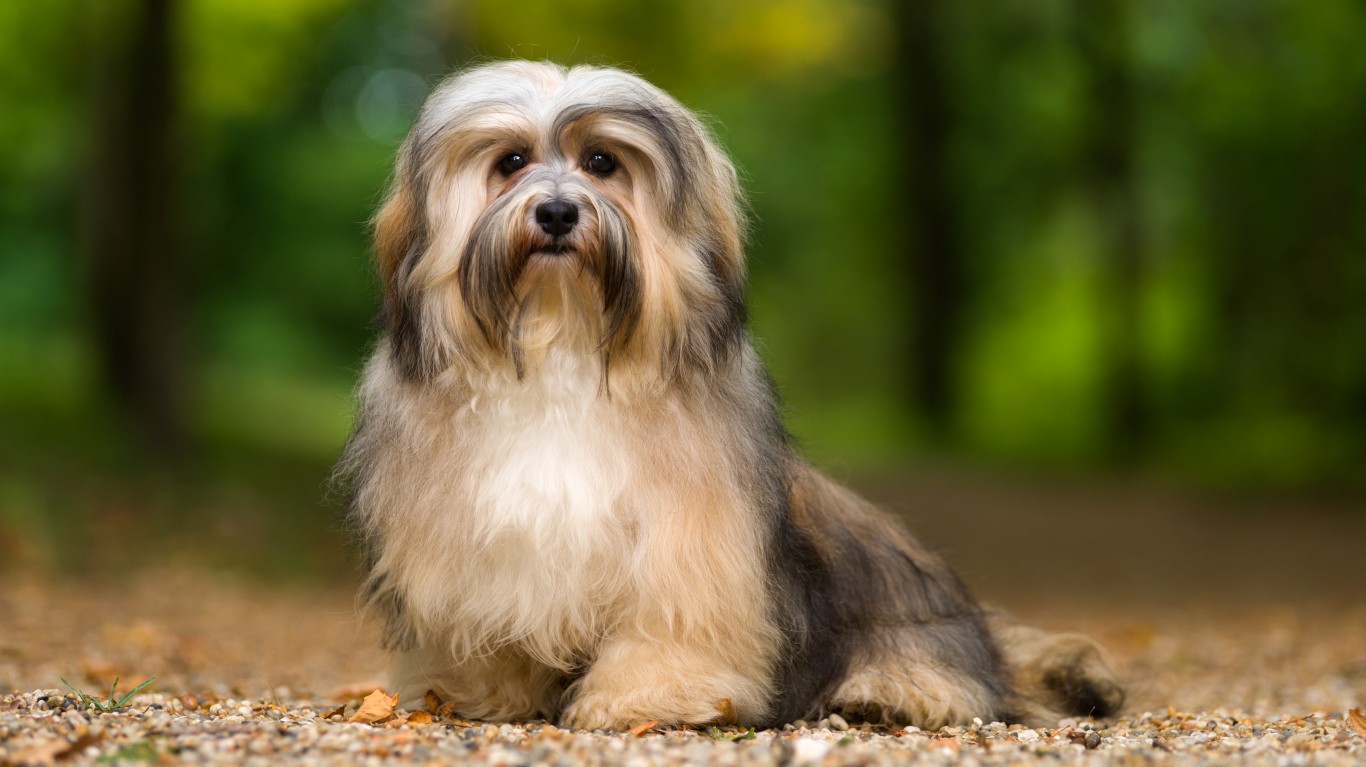
24. Havanese
> Life expectancy: 14-16 years
> Average height: 8.5-11.5 inches
> Average weight: 7-13 pounds
> Group: Toy
The Havanese, as its name might suggest, is the national dog of Cuba. It’s small and sociable. A distinguishing feature is its long, silky coat. The Havanese has a long life expectancy of up to 13 years and manages to look like a puppy — even when it has an old man’s beard.

23. Pomeranian
> Life expectancy: 12-16 years
> Average height: 6-7 inches
> Average weight: 3-7 pounds
> Group: Toy
The Pomeranian is the smallest of the spitz breeds, weighing 3 to 7 pounds. It was made popular by Queen Victoria, who was smitten by its puppy qualities. She had as many as 35 Pomeranians in her kennels and died with one by her side.
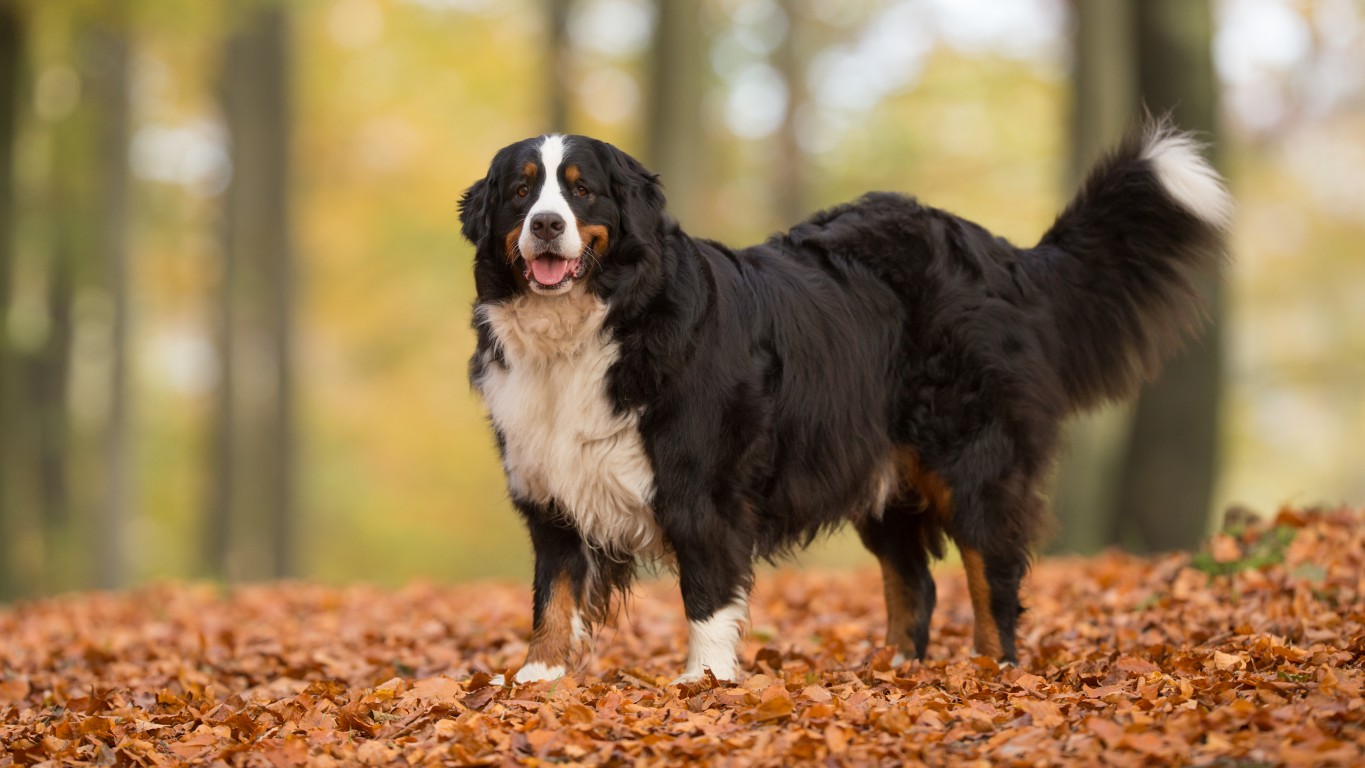
22. Bernese Mountain Dog
> Life expectancy: 7-10 years
> Average height: 25-27.5 inches (male), 23-26 inches (female)
> Average weight: 80-115 pounds (male), 70-95 pounds (female)
> Group: Working
The Bernese mountain dog hails from the Swiss Alps. It was used to herd cattle and haul carts filled with farm produce. The Bernese was the perfect fit for such work because of its muscular build and was known to haul loads weighing more than 1,000 pounds.
[in-text-ad-2]

21. Boston Terrier
> Life expectancy: 11-13 years
> Average height: 15-17 inches
> Average weight: 12-25 pounds
> Group: Non-Sporting
Just as Boston is a historic city with a young population, this dog is a relatively old breed with a young heart. Nicknamed “The American Gentleman,” it’s compact and classy. It excels at canine sports and is eager to please and so is popular as a therapy dog.

20. Shih Tzu
> Life expectancy: 10-18 years
> Average height: 9-10.5 inches
> Average weight: 9-16 pounds
> Group: Toy
Shih tzus originated in China many centuries ago. Although diminutive in size, they take their name from the Mandarin word for lion. They began appearing in the U.S. after World War II, when veterans brought them back to America, and they were recognized by the AKC in 1969. They have a long flowing coat and a proud bearing.
[in-text-ad]

19. Miniature Schnauzer
> Life expectancy: 12-15 years
> Average height: 12-14 inches
> Average weight: 11-20 pounds
> Group: Terrier
In the U.S., the miniature schnauzer is treated differently from other schnauzer breeds in that it is not classified as a working dog and is judged as a terrier. It is intelligent and alert, which makes it a good watchdog, and it excels in obedience trials and agility competitions. The miniature’s eyebrows and beard make it easily recognizable.
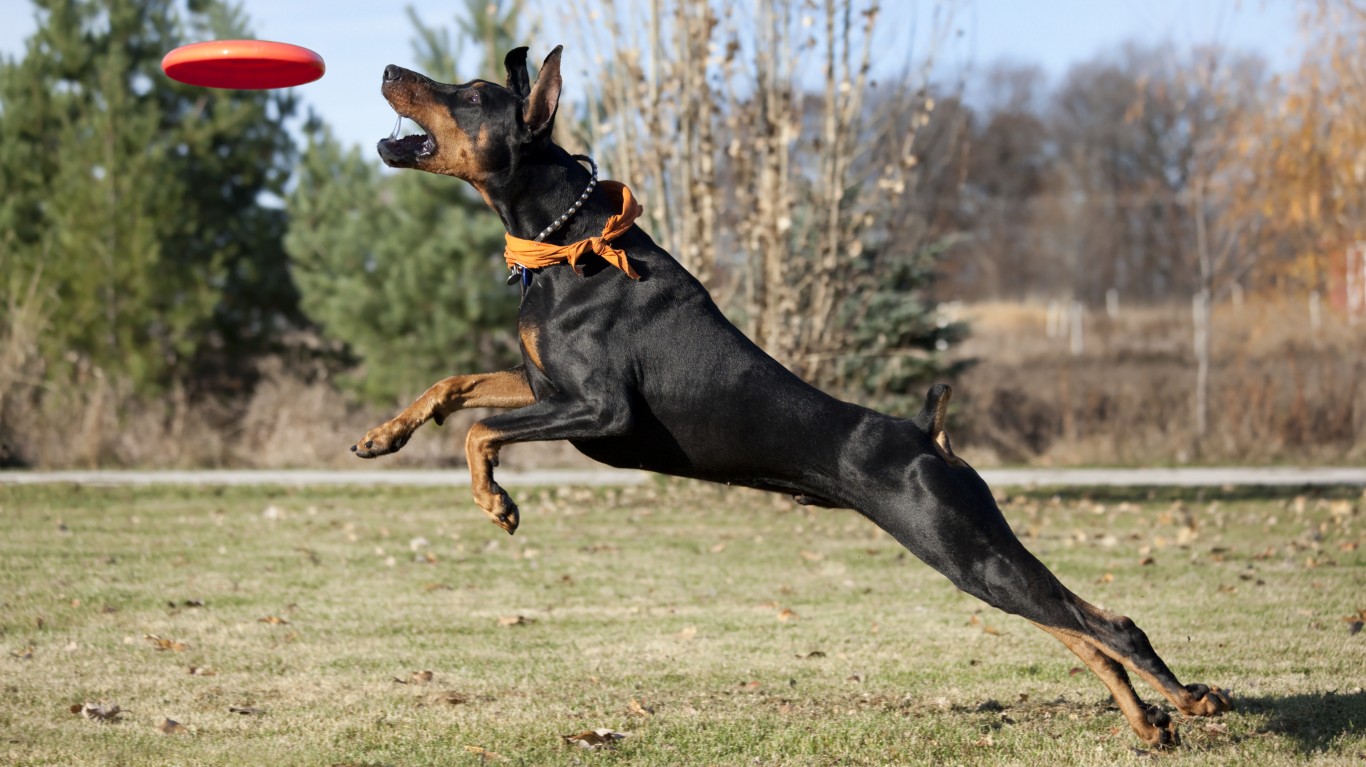
18. Doberman Pinscher
> Life expectancy: 10-12 years
> Average height: 26-28 inches (male), 24-26 inches (female)
> Average weight: 75-100 pounds (male), 60-90 pounds (female)
> Group: Working
The Doberman pinscher was first bred in Germany in the mid-1800s by Karl Friedrich Louis Dobermann, a tax collector and night watchman. He wanted a dog to protect him in his sometimes dangerous line of work. As well as being one of the smartest breeds, the Doberman ranks high in obedience and trainability. This makes the animal popular with police and military forces around the world.

17. Cavalier King Charles Spaniel
> Life expectancy: 12-15 years
> Average height: 12-13 inches
> Average weight: 13-18 pounds
> Group: Toy
This breed has been popular since the days of King Charles II in the 17th century. It is small for a spaniel and goes through its puppy stage slowly, staying frisky even when older. It also has big eyes and a big heart.
[in-text-ad-2]

16. Siberian Husky
> Life expectancy: 12-14 years
> Average height: 21-23.5 inches (male), 20-22 inches (female)
> Average weight: 45-60 pounds (male), 35-50 pounds (female)
> Group: Working
Bred as a sled dog, the Siberian husky is known for its endurance. Huskies have a great work ethic and love to run, preferring that to walking. In fact, the husky is so energetic that it has to be kept leashed or it will run away. In 1925, a relay team of huskies and other sled dogs saved Nome, Alaska, from a diptheria epidemic by running for five days to bring medicine to the town.
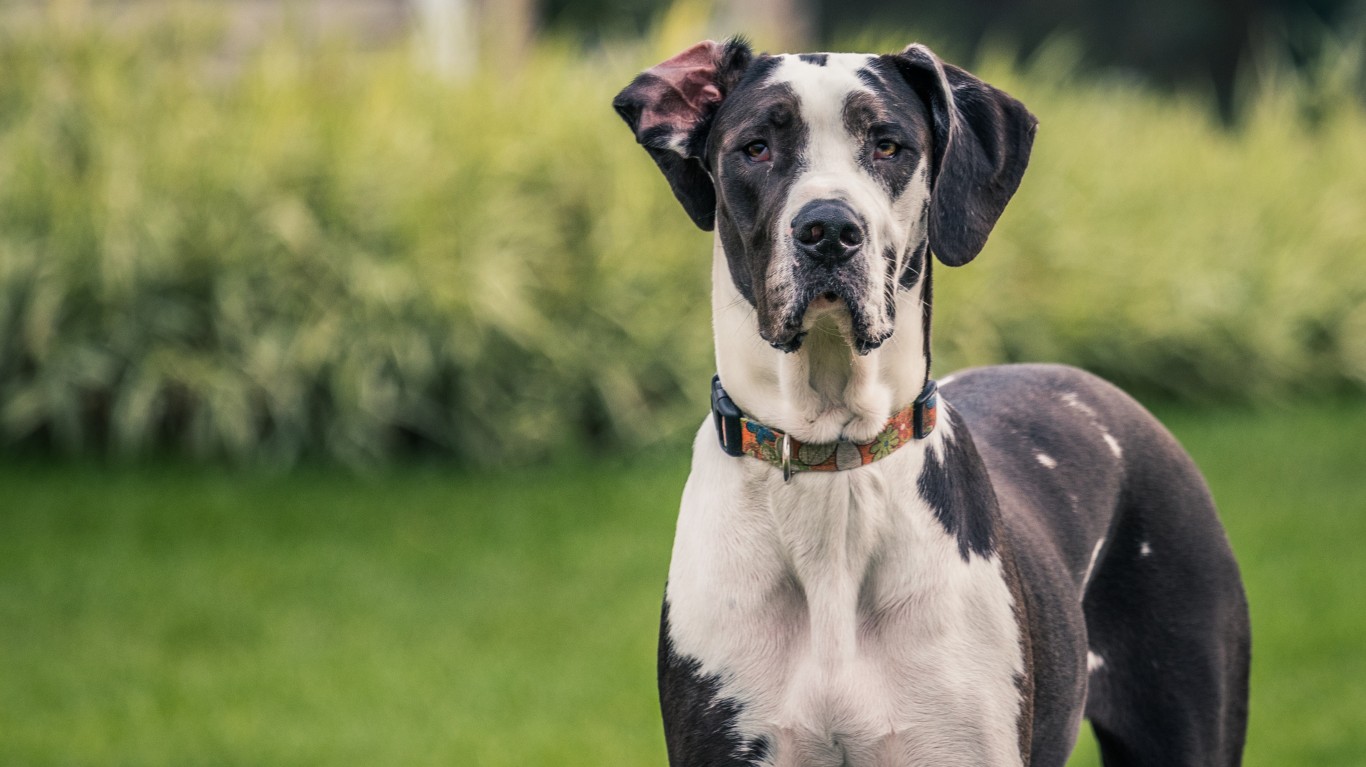
15. Great Dane
> Life expectancy: 7-10 years
> Average height: 30-32 inches (male), 28-30 inches (female)
> Average weight: 140-175 pounds (male), 110-140 pounds (female)
> Group: Working
The great Dane was developed in England and Germany as a boar hound, its long ears often left shredded by the sharp tusks of the wild boar. Today’s great Danes lead much less hazardous lives and can make for great pets. They are dependable, patient, and friendly. But as their name implies, they are huge. Standing on its hind legs, a great Dane can be taller than its owner and weigh up to 200 pounds.
[in-text-ad]
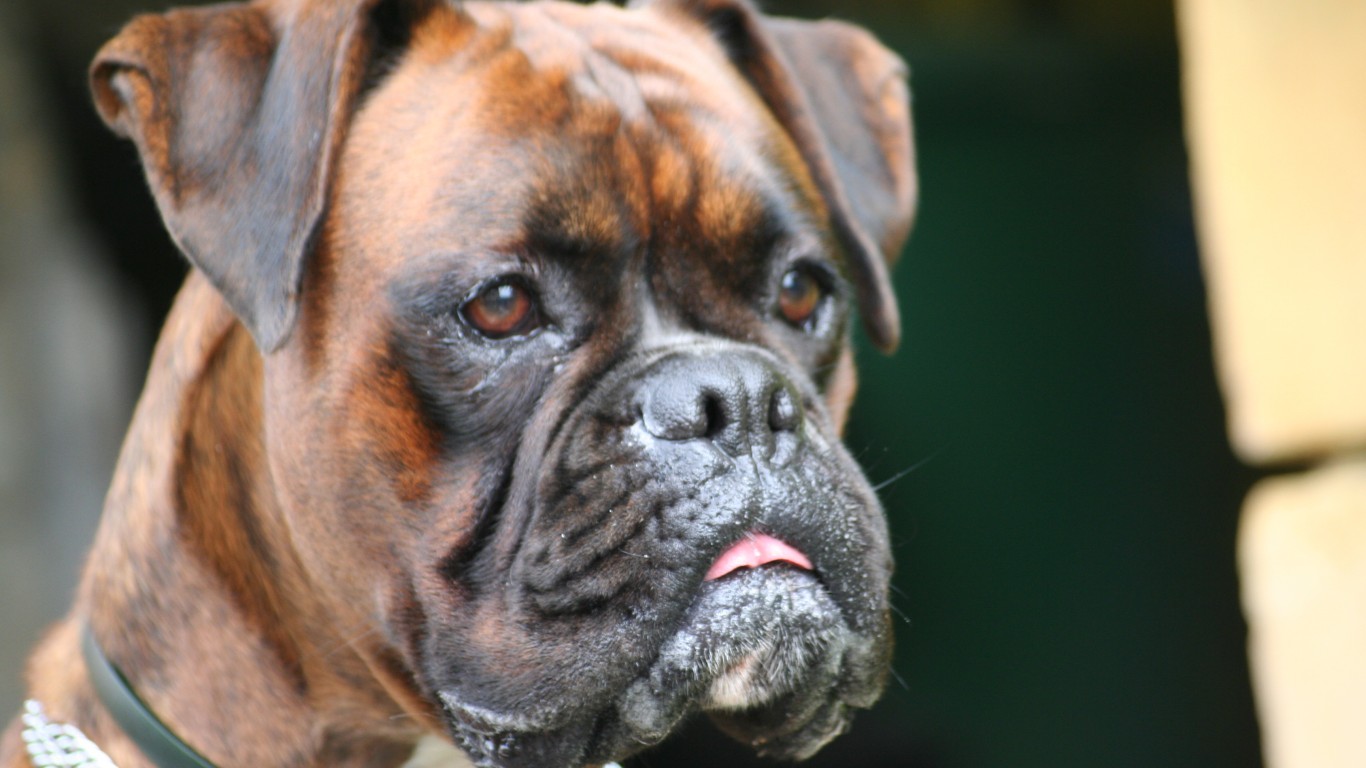
14. Boxer
> Life expectancy: 10-12 years
> Average height: 23-25 inches (male), 21.5-23.5 inches (female)
> Average weight: 65-80 pounds (male), females are about 15 pounds less than male
> Group: Working
Although it was recognized by the AKC in 1904, the boxer did not really gain popularity in the U.S. until after World War II, when returning soldiers brought the dogs home with them from Europe. Its popularity may also have received a boost when actors Humphrey Bogart and Lauren Bacall were given one as a wedding present.

13. Yorkshire Terrier
> Life expectancy: 11-15 years
> Average height: 7-8 inches
> Average weight: 7 pounds
> Group: Toy
The Yorkshire terrier’s confidence and courage make it a good pet to keep in bustling cities, and those qualities have earned the dog the nickname “the tomboy toy.” It is also known for its beautiful silky coat, which has a texture similar to human hair. The Yorkshire terrier requires a lot of care and attention.
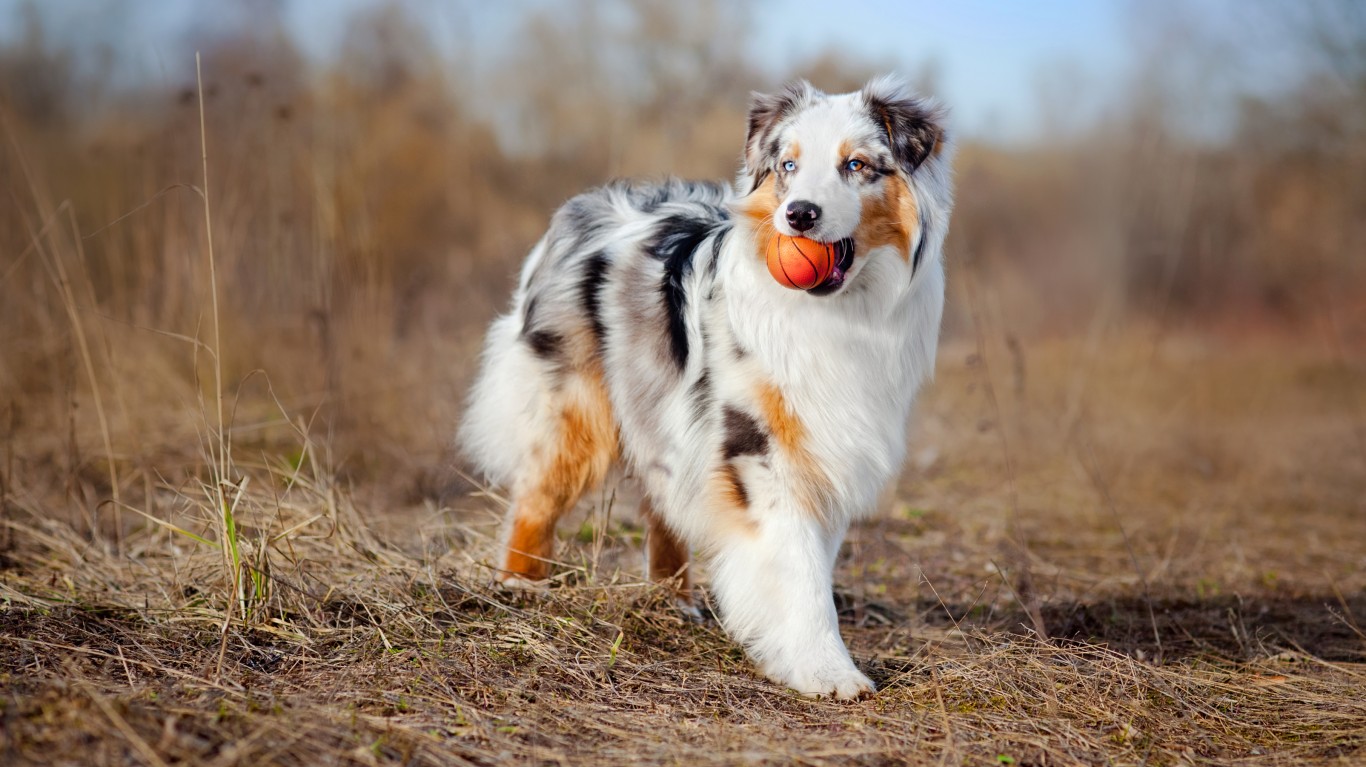
12. Australian Shepherd
> Life expectancy: 12-15 years
> Average height: 20-23 inches (male), 18-21 inches (female)
> Average weight: 50-65 pounds (male), 40-55 pounds (female)
> Group: Herding
The Australian shepherd is a very cosmopolitan dog. It started out in the Pyrenees Mountains between France and Spain, was brought to Australia to herd sheep, and then became popular with U.S. ranchers, who thought it originated down under — hence the name. It is an intelligent breed with a strong herding instinct and work ethic. The Australian shepherd is closely associated with the cowboy lifestyle.
[in-text-ad-2]
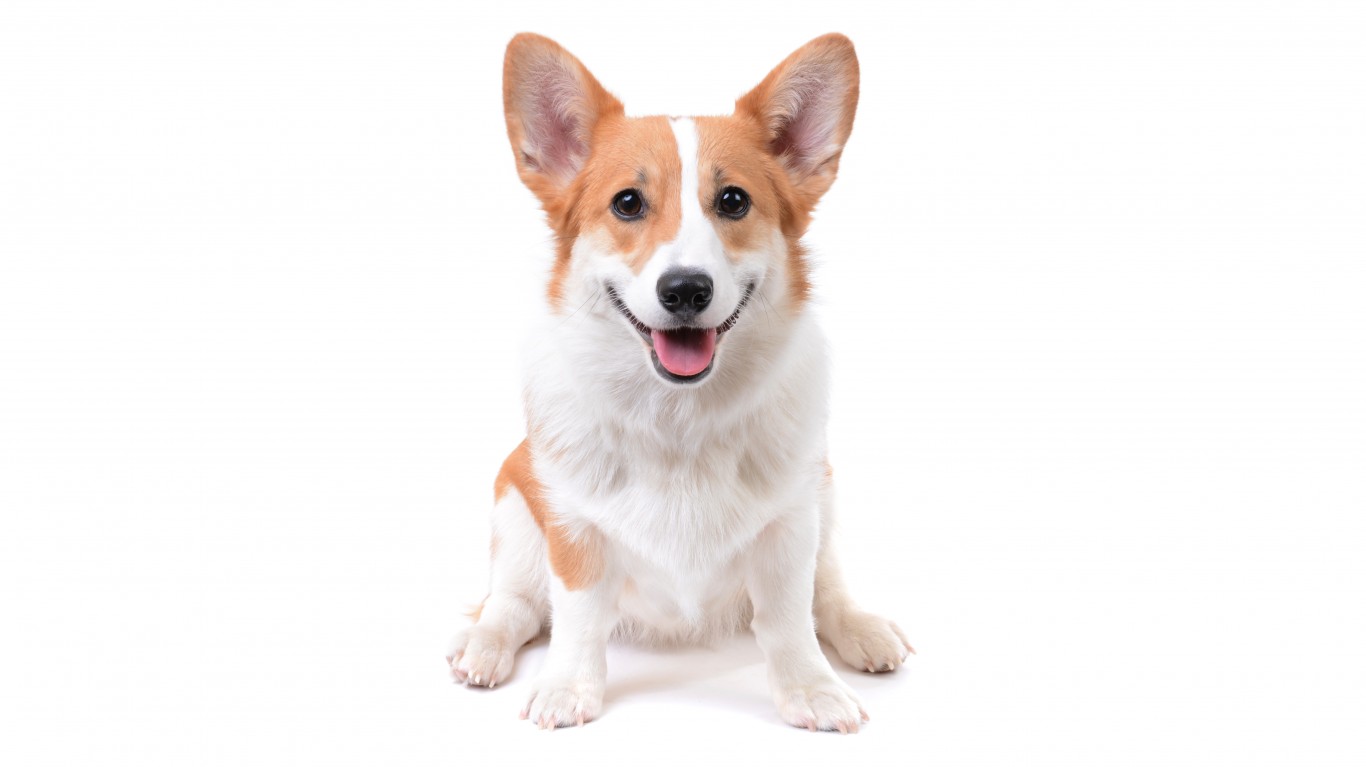
11. Pembroke Welsh Corgi
> Life expectancy: 12-13 years
> Average height: 10-12 inches
> Average weight: up to 30 pounds (male), up to 28 pounds (female)
> Group: Herding
The Pembroke Welsh corgi is popular with American pet owners as well as with English royalty — it’s Queen Elizabeth II’s favorite. The corgi is a working dog, strong and athletic. And despite its little legs, it excels at many sports. The corgi is an easy pet to have, and its short coat needs little maintenance.

10. Dachshund
> Life expectancy: 12-16 years
> Average height: 8-9 inches (standard), 5-6 inches (miniature)
> Average weight: 16-32 pounds (standard), 11 pounds & under (miniature)
> Group: Hound
The dachshund was developed in Germany centuries ago to hunt badgers, and its short legs and long body make it good at below-ground work. The dachshund is intelligent and should be kept busy or it will get bored. It comes in miniature or standard size and can have a smooth, wirehaired, or long-haired coat.
[in-text-ad]

9. German Shorthaired Pointer
> Life expectancy: 10-12 years
> Average height: 23-25 inches (male), 21-23 inches (female)
> Average weight: 55-70 pounds (male), 45-60 pounds (female)
> Group: Sporting
The German shorthaired pointer is a great gundog and a great pet, although it likes a lot of exercise. It is a natural retriever on land and water, and is one of the finest swimming dogs, aided by webbed feet.

8. Rottweiler
> Life expectancy: 9-10 years
> Average height: 24-27 inches (male), 22-25 inches (female)
> Average weight: 95-135 pounds (male), 80-100 pounds (female)
> Group: Working
The Rottweiler is one of the oldest working breeds and may have been herding livestock since the days of the Roman Empire. The breed combines intelligence, strength, and endurance. Unfortunately, the Rottweiler has sometimes been portrayed in the media as aggressive, but according to the AKC, it is “a calm, confident, and courageous dog.”
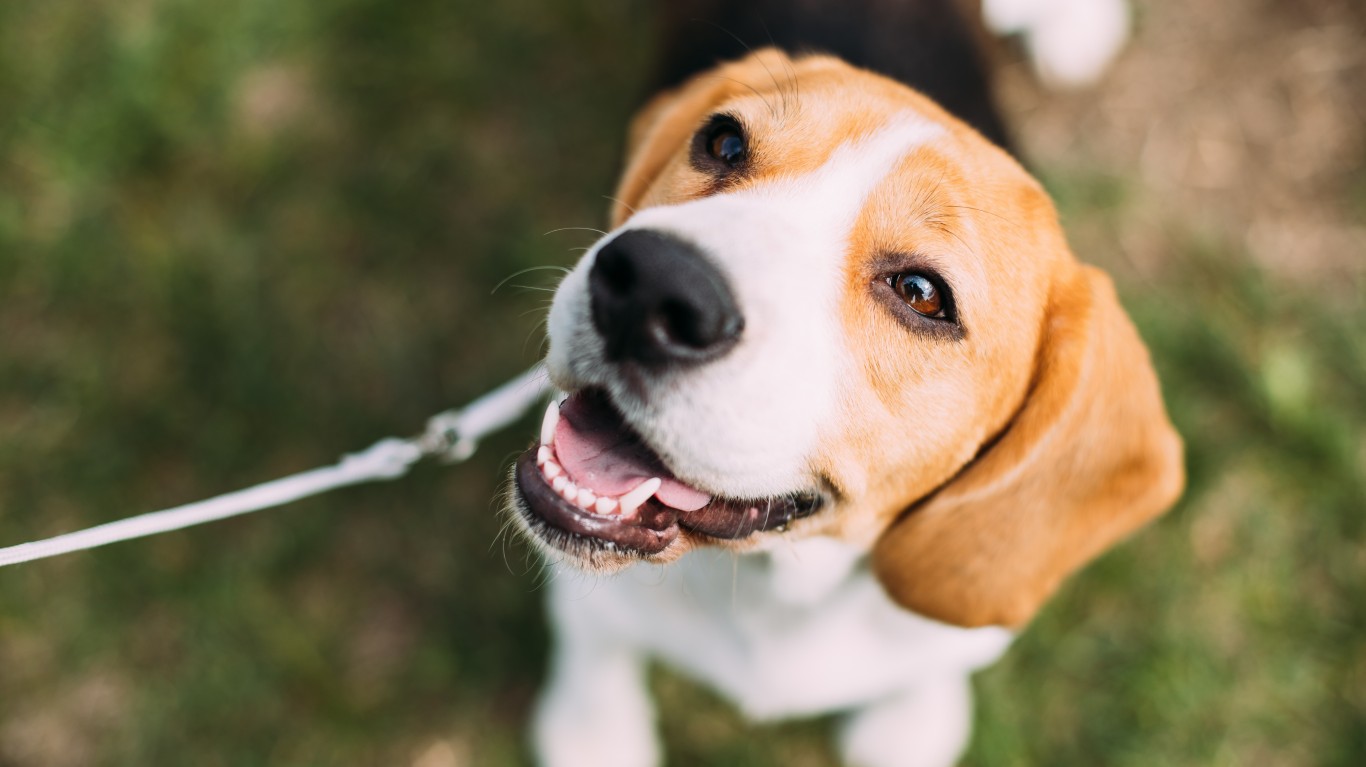
7. Beagle (Two size varieties)
> Life expectancy: 10-15 years
> Average height: 13 inches and under and 13-15 inches
> Average weight: under 20 pounds (13 inches & under), 20-30 pounds (13-15 inches)
> Group: Hound
Bred to live and work in packs, beagles are sociable dogs and like the company of their human families, as well as other dogs. They are scent dogs, which can sometimes get them into trouble and means they should not be left off-leash unless in a secured area.
[in-text-ad-2]
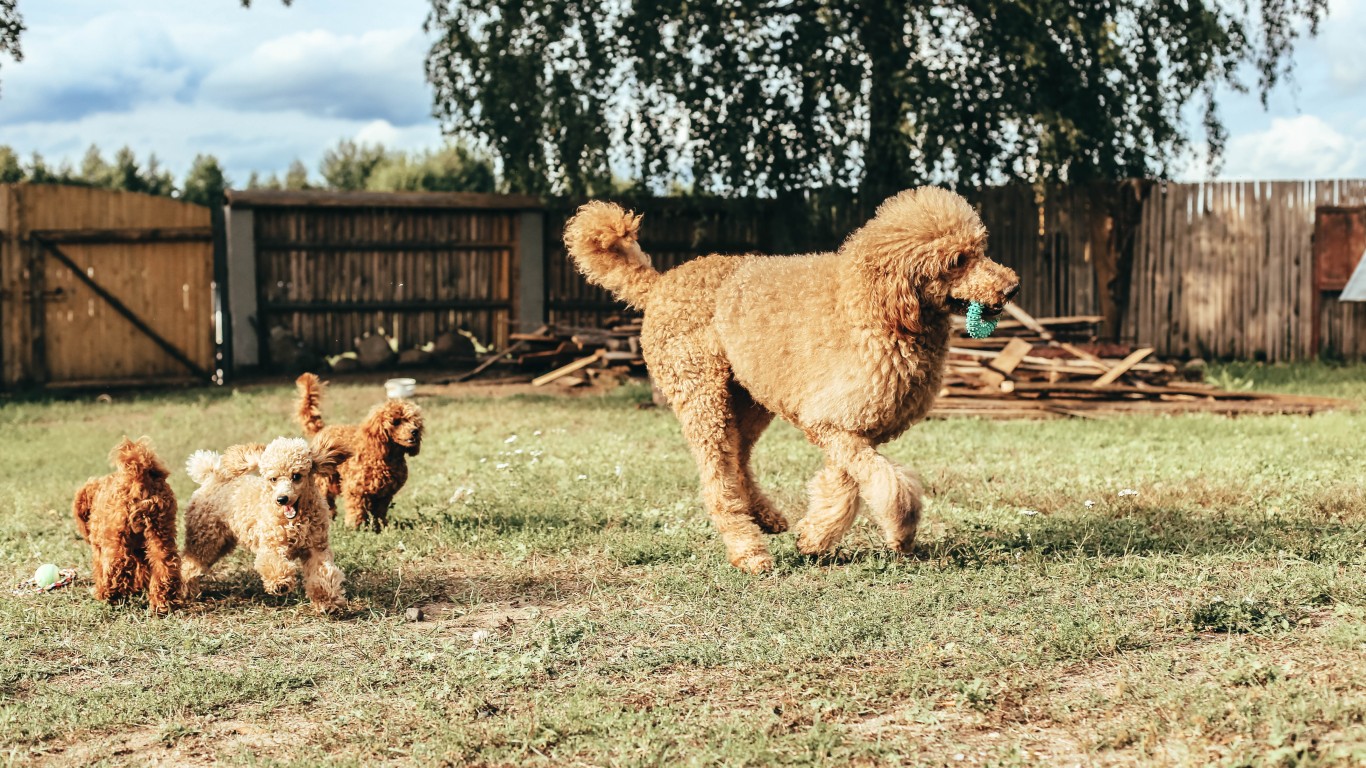
6. Poodle (All varieties: Standard, Miniature & Toy)
> Life expectancy: All varieties: 10-18 years
> Average height: Standard: Over 15 inches, Miniature: 10-15 inches, Toy: no more than 10 inches
> Average weight: Standard: 60-70 pounds (male), 40-50 pounds (female), Miniature: 10-15 pounds, Toy: 4-6 pounds
> Group: Standard: Non-Sporting, Miniature: Non-Sporting, Toy: Toy
Poodles come in three sizes — standard, miniature, and toy — and a variety of solid colors. They are smart and eager to please. They are also energetic and are good runners and swimmers. They require regular clipping and grooming of their hypoallergenic coat.
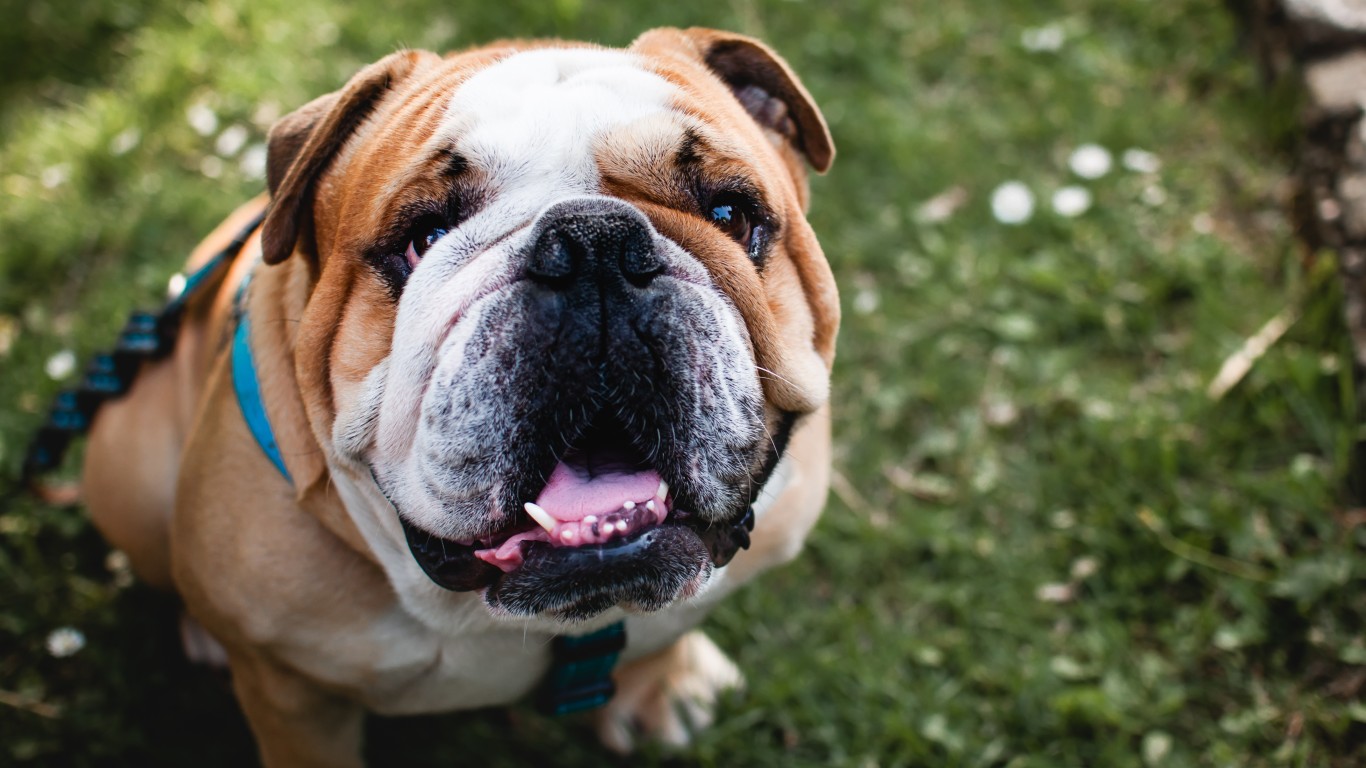
5. Bulldog
> Life expectancy: 8-10 years
> Average height: 14-15 inches
> Average weight: 50 pounds (male), 40 pounds (female)
> Group: Non-Sporting
The bulldog has long been associated with British culture (note the resemblance to Winston Churchill!), but it’s also one of the most popular breeds in America. Its name belies a friendly personality and gentle disposition.
[in-text-ad]
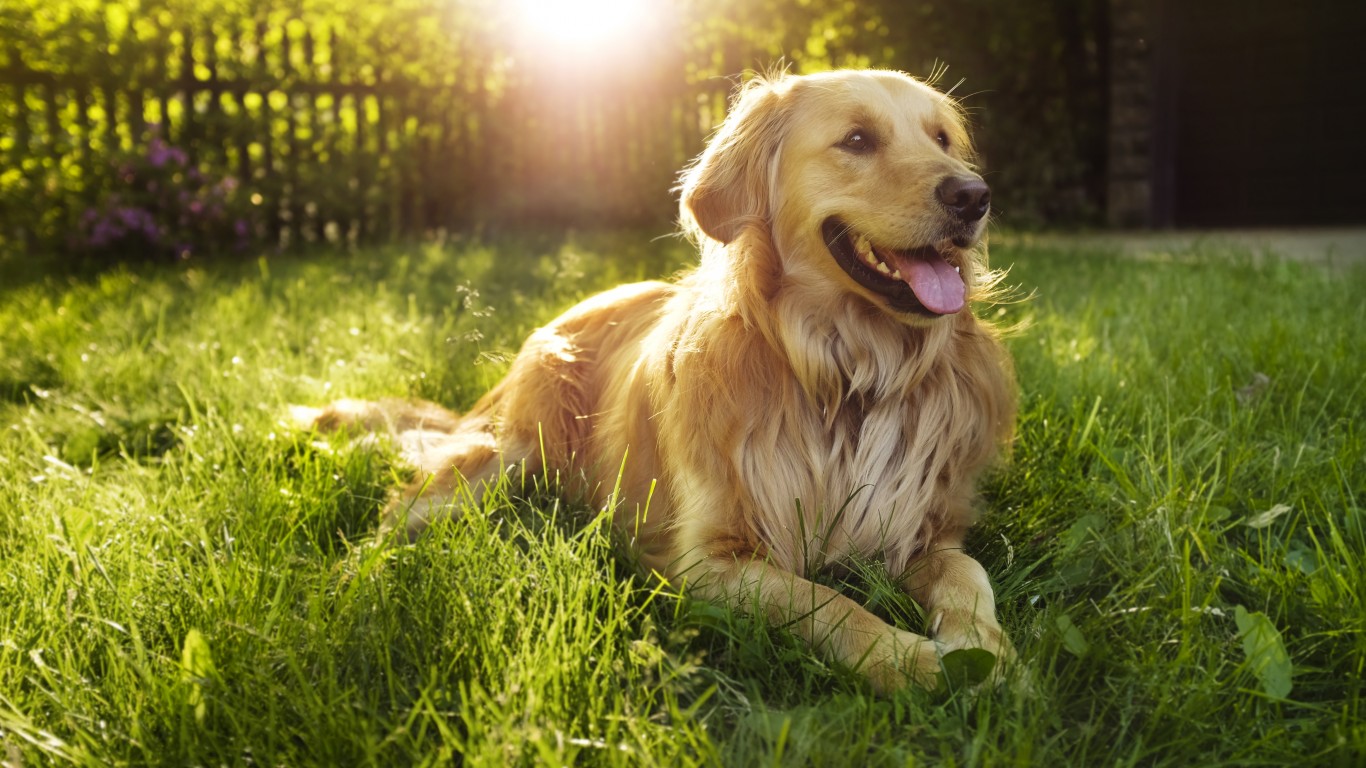
4. Golden Retriever
> Life expectancy: 10-12 years
> Average height: 23-24 inches (male), 21.5-22.5 inches (female)
> Average weight: 65-75 pounds (male), 55-65 pounds (female)
> Group: Sporting
Golden retrievers aren’t just intelligent, they are hard workers, too. They are often used as guide dogs, in search and rescue, and — as their name suggests — for hunting. Their many other endearing characteristics, including patience and playfulness, make them great pets.
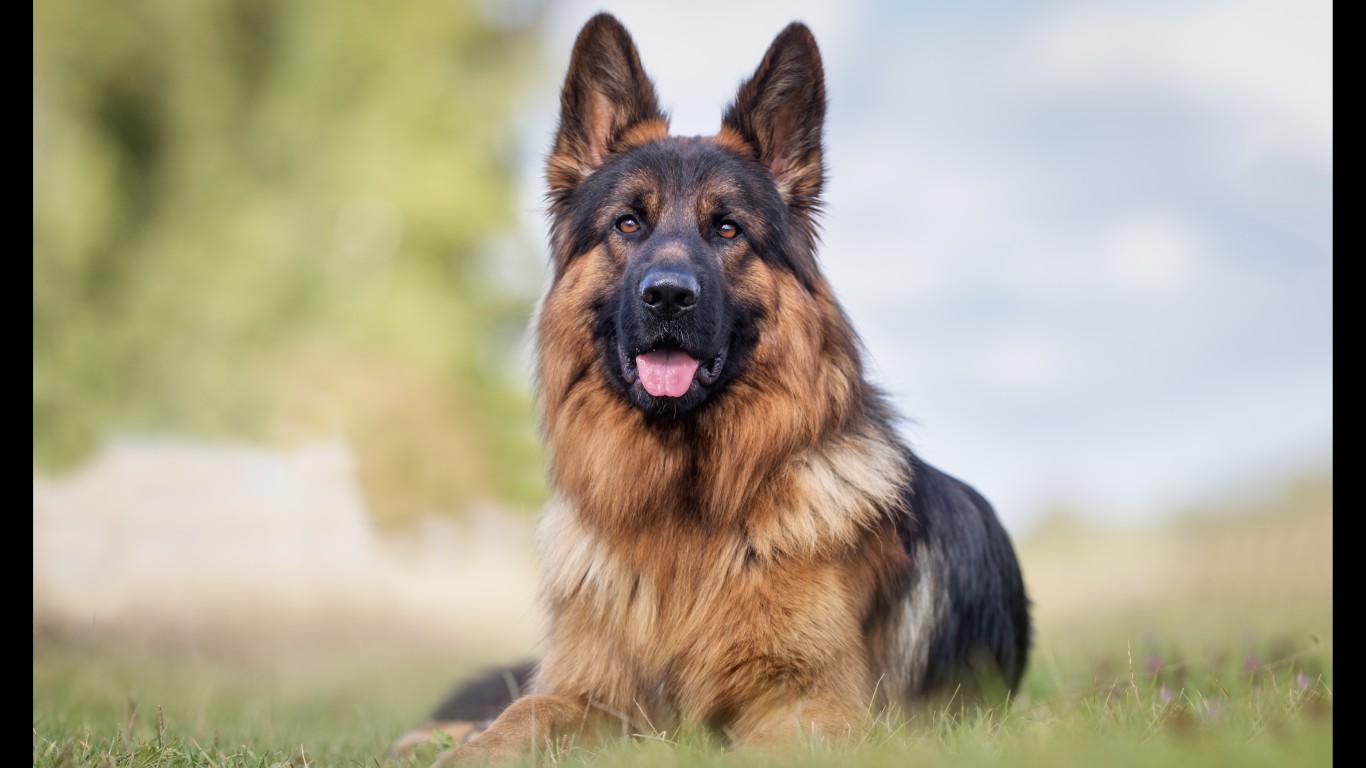
3. German Shepherd Dog
> Life expectancy: 12-14 years
> Average height: 24-26 inches (male), 22-24 inches (female)
> Average weight: 65-90 pounds (male), 50-70 pounds (female)
> Group: Herding
The German shepherd is the third most popular dog in the U.S., but is the first choice for many homes because of its intelligence, trainability, and obedience. German shepherds are used for disability assistance, search and rescue, and as police dogs.

2. French Bulldog
> Life expectancy: 10-12 years
> Average height: 11-13 inches
> Average weight: under 28 pounds
> Group: Non-Sporting
Contrary to its name, the French bulldog actually comes from Nottingham, England — not France.These sturdy little dogs with their bat-like ears are playful, good with small children, and intelligent. They don’t need much exercise or grooming but shouldn’t be left alone for long as they can suffer from separation anxiety. Like other “flat-faced” breeds, French bulldogs are prone to snoring, which can add to their charm – or not.
[in-text-ad-2]

1. Labrador Retriever
> Life expectancy: 10-12 years
> Average height: 22.5-24.5 inches (male), 21.5-23.5 inches (female)
> Average weight: 65-80 pounds (male), 55-70 pounds (female)
> Group: Sporting
The Labrador retriever has topped the AKC’s list of most popular breeds in the U.S. since 1991. Labs are friendly, outgoing, and eager to please. They are also one of the most sought-after breeds for challenging work, whether as guide dogs or for search and rescue. When lives are in danger, you want a dog that is smart and dependable.
Let’s face it: If your money is just sitting in a checking account, you’re losing value every single day. With most checking accounts offering little to no interest, the cash you worked so hard to save is gradually being eroded by inflation.
However, by moving that money into a high-yield savings account, you can put your cash to work, growing steadily with little to no effort on your part. In just a few clicks, you can set up a high-yield savings account and start earning interest immediately.
There are plenty of reputable banks and online platforms that offer competitive rates, and many of them come with zero fees and no minimum balance requirements. Click here to see if you’re earning the best possible rate on your money!
Thank you for reading! Have some feedback for us?
Contact the 24/7 Wall St. editorial team.